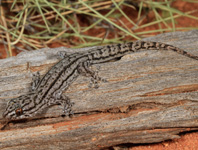Abstract
Are birds dinosaurs? Answers to this question yield various responses, depending on a particular viewpoint. From the perspective of a common understanding of recent theories of the origin of birds and their potential precursor (ancestral) animals, then, yes, birds are a kind of dinosaur, having evolved from one or another non-avian dinosaur (Bostwick 2003). From the perspective of public understanding of science (how to inform the general public of biology’s latest findings), then, yes, birds are dinosaurs, at least they are a kind of dinosaur, one that young children can actually hold in their hands (e.g., Maugh 2012). These two perspectives, largely derived from phylogenetic reasoning, contrast with the perspective from classification, which asks different questions: What are birds; what are dinosaurs; and how are they related to one another? Addressing these questions raises the issue of trees in classification (phylogenetic or otherwise) and how to read them. This is not as easy a task as is often suggested in the recent literature on tree-reading and tree-thinking (first noted long ago by O’Hara 1988, see Baum and Smith 2012 for a first book-length treatment). The role of tree-thinking in classification is applied after a tree has been constructed and natural groups established. For instance, it would seem premature to infer phylogenies on poorly classified taxa, such as invertebrates, reptiles and so on, as these groupings are artificial. Doing so would only result in erroneous hypotheses that cannot be substantiated. The role of classification, however, is to make sure that the natural groups are justified, and in order to do this it is vital that those groups are understood. Birds represent a monophyletic group, which has series of unique characteristics that it shares with other theropods (i.e., bipedal saurischian dinosaurs). Dinosaurs, as usually conceived, are a group of non-monophyletic organisms that variously share closer characteristics (i.e., relationships) with other taxa rather than uniquely among themselves. In the case of dinosaurs (as Dinosauria) and classification, what is at stake is a taxonomic name, rather than a unique group of character traits. Below we outline and compare two contrasting ways of reading trees, one way, concerned with classification, yielding the view that, no, birds are not dinosaurs.

